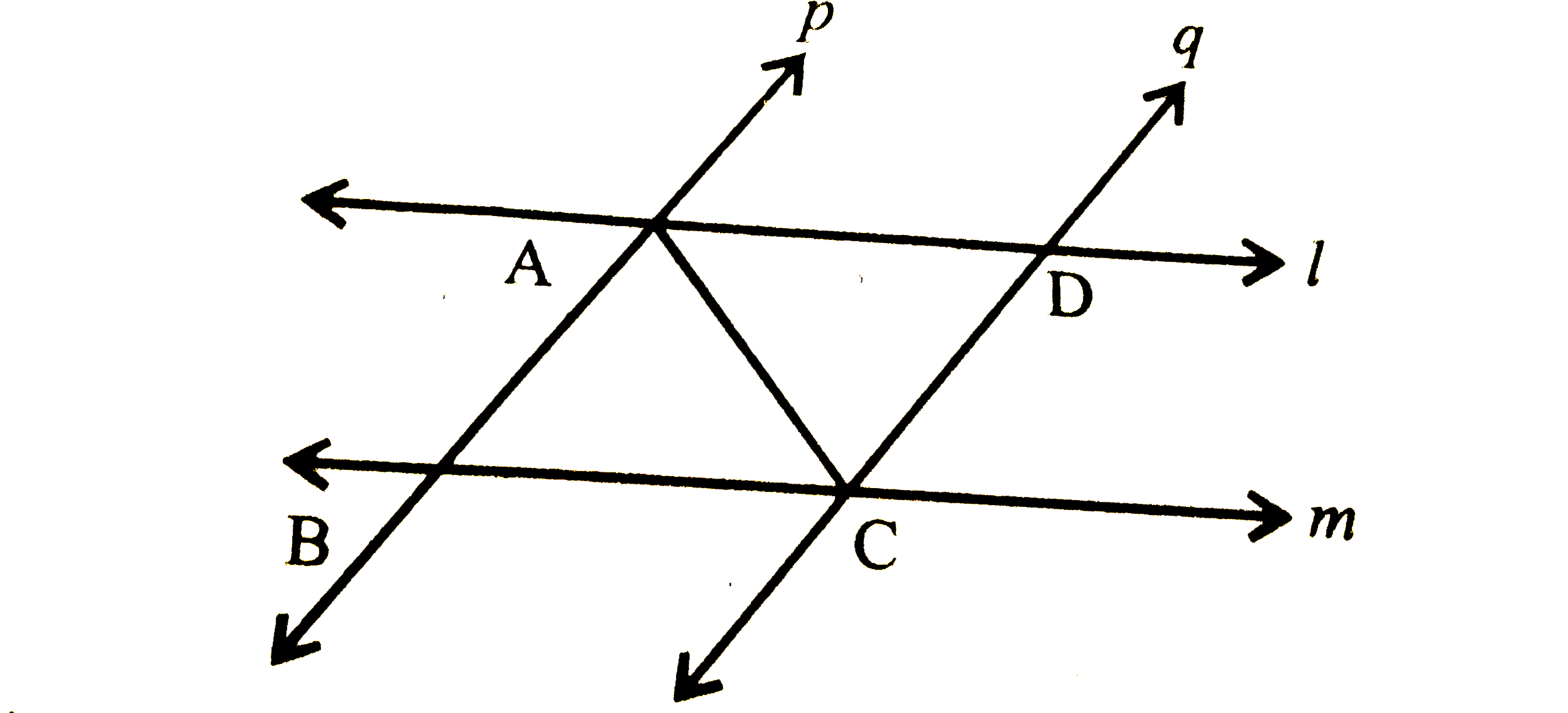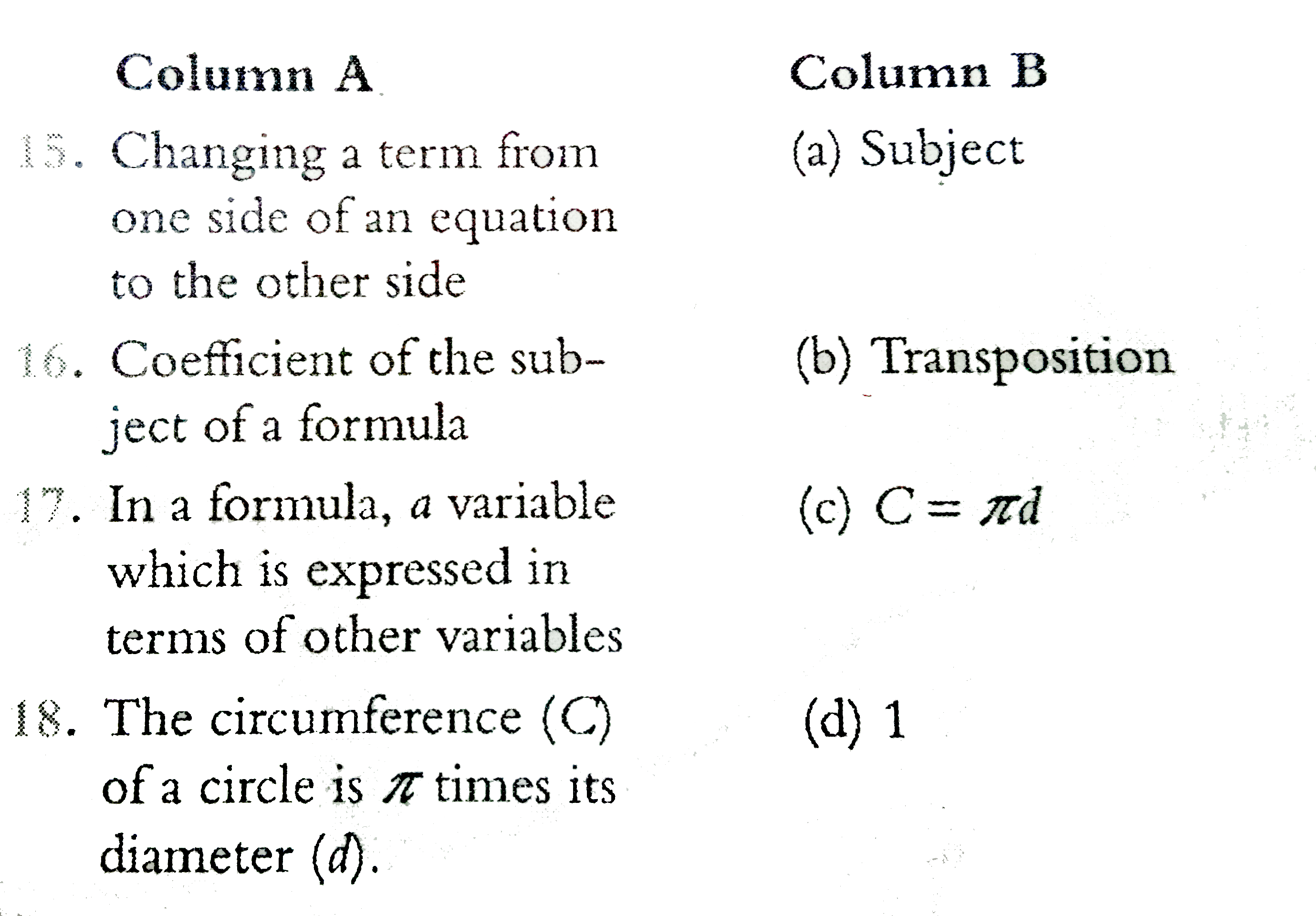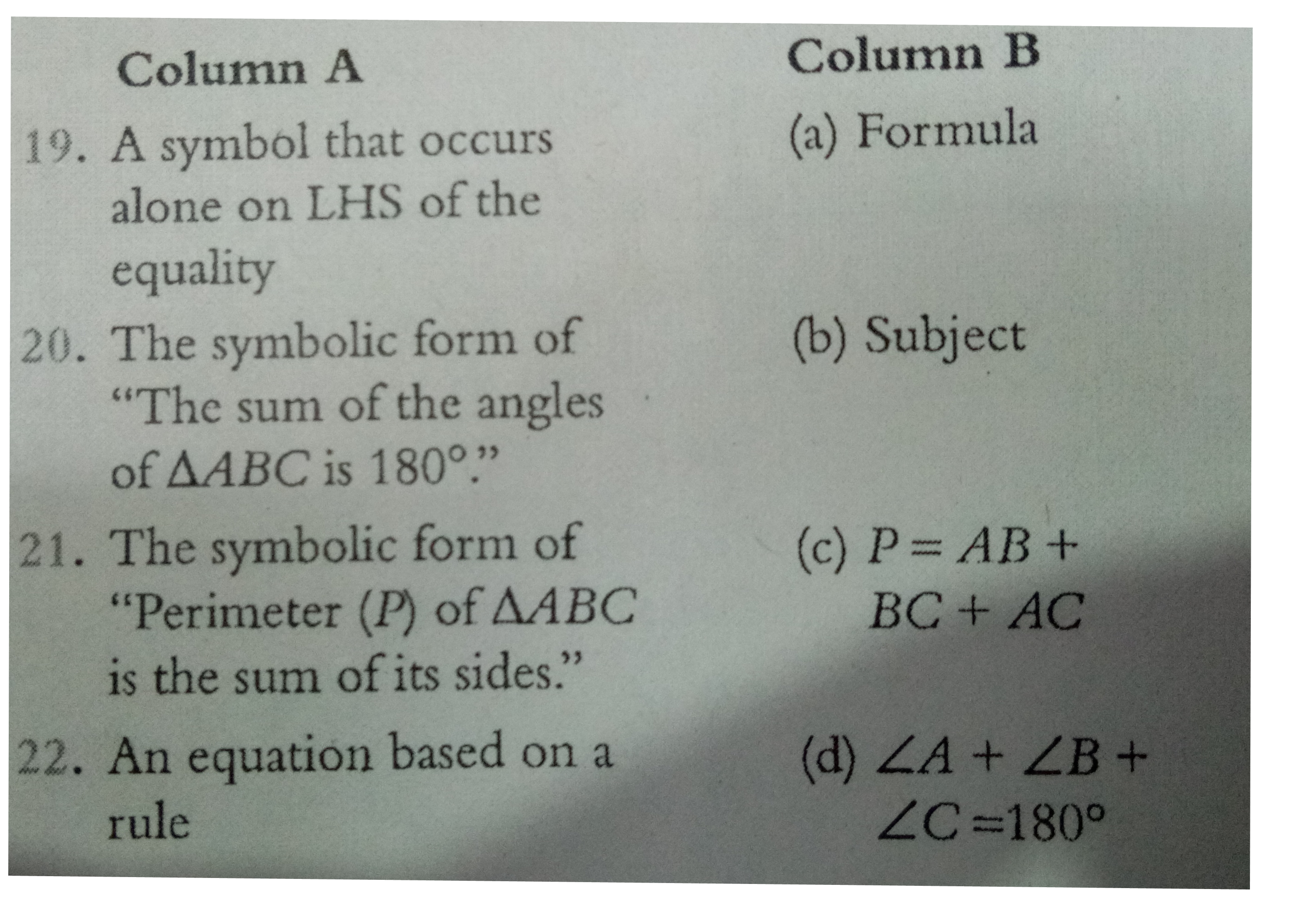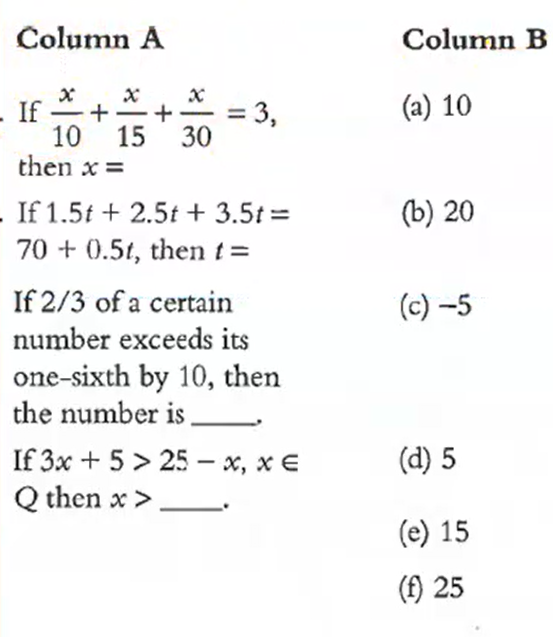नीचे के चित्र में l और m दो समांतर रेखाएँ हैं जिन्हें समांतर रेखाओं p और q का एक अन्य युग्म प्रतिच्छेदित करता है दर्शाइए कि ΔABC≅ΔCDA है |

चूँकि l∣∣m तथा AC एक तिर्यक रेखा है |
∴ ∠BAC=∠DCA ...(i)[एकान्तरकोण]
पुन: चूँकि l∣∣m तथा AC एक तिर्यक रेखा है |
∴ ∠BCA=∠DAC ...(ii)[एकान्तरकोण]
अब ΔABC तथा ΔCDA में,
∠BAC=∠DCA [(i) से]
∠BCA=∠DAC [(ii) से]
AC=CA [उभयनिष्ठ भुजा]
अत: ΔABC≅ΔCDA [सर्वांगसमता से भुजा]
Topper's Solved these Questions
- त्रिभुजों की सर्वांगसमता Book:KC SINHAChapter:त्रिभुजों की सर्वांगसमता Exercise:अभ्यास 9.1 (अतिलघु उत्तरीय प्रश्न )
Explore 36 Videos
- त्रिभुजों की सर्वांगसमता Book:KC SINHAChapter:त्रिभुजों की सर्वांगसमता Exercise:अभ्यास 9.1 लघु उत्तरीय प्रश्न
Explore 11 Videos
- ज्यामितीय बनावट ( रचनाएँ ) Book:KC SINHAChapter:ज्यामितीय बनावट ( रचनाएँ ) Exercise:उदाहरण
Explore 11 Videos
- दो चरों वाले रैखिक समीकरण Book:KC SINHAChapter:दो चरों वाले रैखिक समीकरण Exercise:वस्तुनिष्ट प्रश्न
Explore 15 Videos
Similar Questions
यदि किसी त्रिभुज की दो भुजाएँ और उनके .............. कोण, दूसरे त्रिभुज की तदनुरूपी दोनों भुजाओं तथा उनके अंतर्गत कोण के बराबर हों तो दोनों त्रिभुज सर्वांगसम होते हैं |
View Solutionदो त्रिभुजों के सर्वांगसम होने के लिए भुजा-भुजा-भुजा प्रतिबंध को लिखें |
View Solutionएक △ABC बनाये जिसमे BC या (a) =6.6सेमि, CA+AB या (b+c) =10.2 सेमि तथा ∠B=60∘
View Solutionएकघातीय समीकरण ax+by+c=0 के वास्तविक हलो की संख्या है
View SolutionHow many lines of symmetry does the above figure have ?
View SolutionWhich of the following are correct chain isomers of butane ? (i)
View SolutionDetermine the point of symmetry of a regular hexagon.
View SolutionDtermine the images of the following figure about the given line :
View SolutionMatch the following Column A to Column B

View SolutionMatch the following Column A to Column B

View SolutionMatch the following Column A to Column B

View SolutionThe inequation represented by the graph given below is :
View SolutionThe inequation that best describes the graph given below is _________
View SolutionThe inequation that best describes the following graph is _________
View SolutionWhich inequations represent the shaded region in the given figure
View SolutionAt point P, the value of (dy)/(dx) is : ltimg src="https://d10lpgp6xz60nq.cloudfront.net/physics_images/ALN_PHY_R04_E01_025_Q01.png" width="80%"gt
View Solution